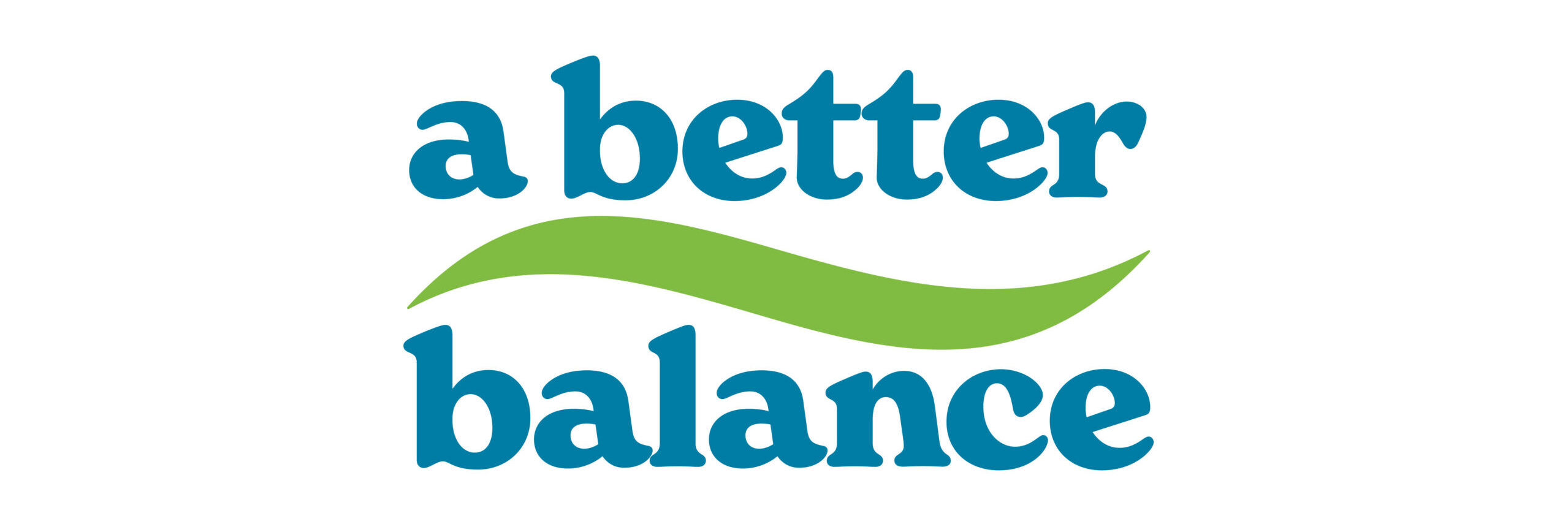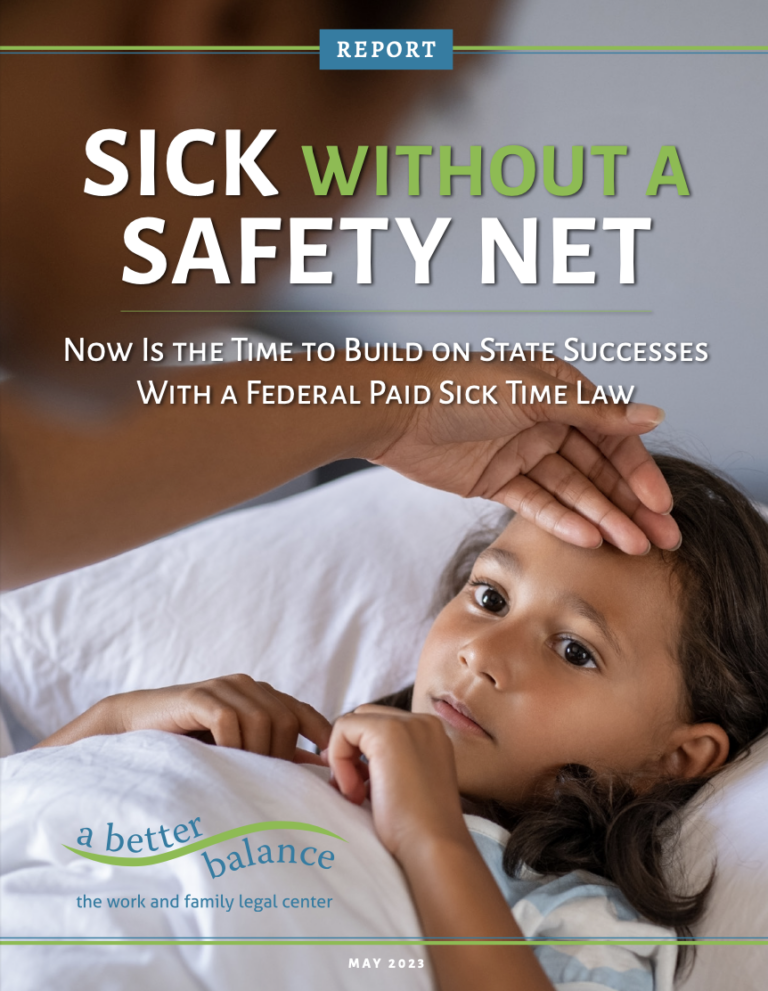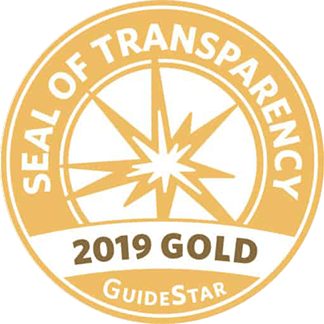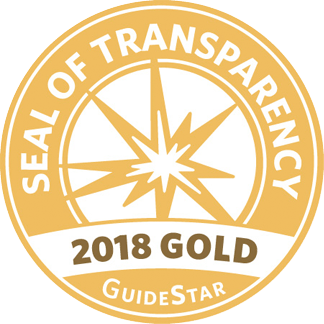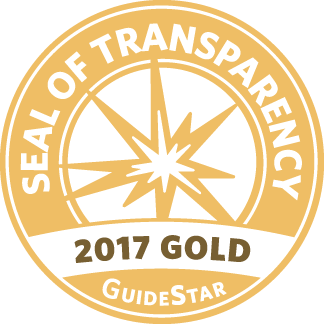Sick Without a Safety Net
Now Is the Time to Build on State Successes With a Federal Paid Sick Time Law
The original March 2022 version of this report was authored by Dilini Lankachandra with contributions from Cassandra Gomez, Sherry Leiwant, and Jared Make.
Thank you to Dina Bakst, Sarah Brafman, Marcella Kocolatos, Katie O’Brien, Rachel Sica, and Molly Weston Williamson for their support and contributions to the original report.
May 2023 Update
Executive Summary
All workers deserve the ability to take time to care for their health and that of their loved ones without sacrificing their economic security. And yet, although it comes as a surprise to many, approximately 28 million workers in the United States lack even a single day of paid sick leave to care for themselves or their loved ones.1
Despite more than 15 years of fighting to pass paid sick time laws at the state and local level, resulting in 16 such state laws (including in the District of Columbia) and dozens of local laws2 covering almost all of our largest cities, millions of workers continue to lack paid sick time because the United States has no federal law guaranteeing any worker the right to paid sick time. As a result, far too many workers are dependent on the largesse of their employers for something that should be a basic right for all working people. This lack of a national law ensuring that all workers have access to paid sick time makes the U.S. an extreme outlier – no other wealthy countries can say the same.3
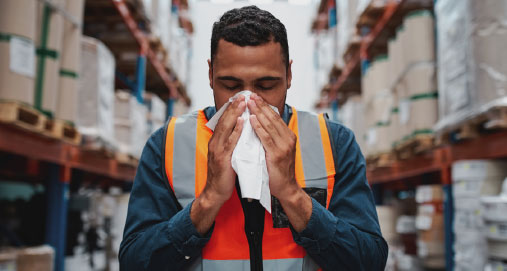
Without paid sick leave, countless workers are faced with the impossible choice between their paycheck and their health or the health of their families. This gap in worker protections has severe consequences: it increases the spread of infectious disease, prevents workers and their families from accessing health-care, and harms businesses and the overall economy. Moreover, access to paid sick leave is deeply inequitable, with BIPOC (Black, Indigenous, and People of Color) workers, low-income workers, women, and LGBTQ individuals disproportionately less likely to be able to take paid time off.
After more than three years of the COVID-19 pandemic, the need for universal paid sick leave has become even clearer. Despite the unprecedented COVID-19 outbreak, which was compounded this past winter by widespread flu and RSV (respiratory syncytial virus),many workers remain unable to take time off when they or their loved ones are sick.4 In fact, 55% of retail and fast-food workers, many of our front-line and essential workers, do not have access to paid sick leave.5 This not only harms workers, who are unable to take the time to properly isolate or recover, but also their communities and the economy at large. One study estimated that temporary access to paid sick leave in 2020—during the height of the pandemic—resulted in 400 fewer cases of COVID-19 per day in states that previously did not guarantee this right.6 The data underscores the need for more enduring paid sick leave protections.
The time is long past for a federal paid sick leave law, one that will protect workers, their families, and public health. A Better Balance has helped to lead the movement to secure paid sick leave for all workers, helping to draft and pass paid sick leave requirements in states and localities throughout the country and advocating for paid sick leave at the federal level. Our work helping to draft, pass, and implement these laws reveals two lessons that Congress should heed:
- state and local paid sick leave laws work well for workers and their employers, all while benefitting public health; and
- workers in states without paid sick leave laws are losing out and Congress needs to pass the Healthy Families Act so that every worker in this country has access to paid sick leave.

We present this report to lay out the need for paid sick leave, to uplift the voices of workers who have suffered because they do not have this right, outline the history of the movement to secure this benefit for all workers in the United States, and suggest, based on our extensive experience with this issue, what a federal paid sick leave law should look like.
Thank you to Dina Bakst, Sarah Brafman, Marcella Kocolatos, Katie O’Brien, Rachel Sica, and Molly Weston Williamson for their support and contributions to this report.
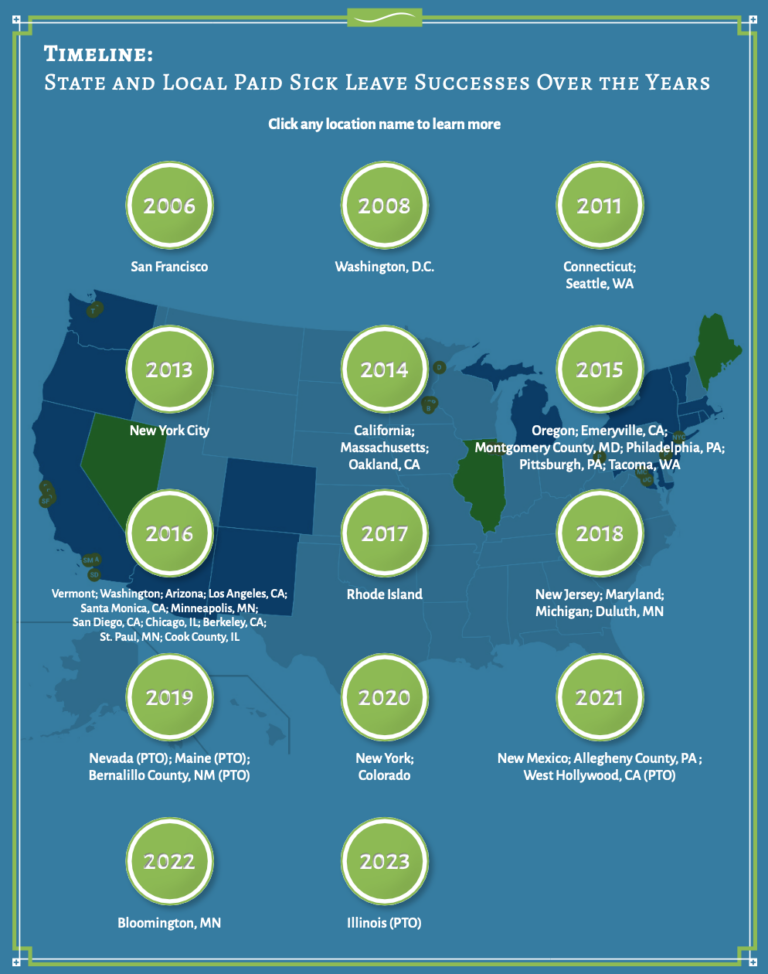
Map of Paid Sick Time Laws
Click to explore our interactive map of state and local laws.
Paid Sick Leave by the Numbers
- The United States is the only developed country that does not guarantee paid sick leave for workers.7
- Because of this major gap in our federal laws, approximately 28 million American workers do not have access to a single paid sick day.8
- Women, minority, and low-income workers are the least likely to have access to paid sick leave.
- Only 38% of the lowest-paid decile of private-sector workers have access to paid sick leave, compared to 96% of workers in the top-paid decile.9
- Forty-three percent of working mothers—including 54% of Latina mothers and 42% of Black mothers—do not have access to paid sick leave.10
- Only 49% of Hispanic workers have paid sick leave, compared with 61% of the general population.11
- Front-line workers also disproportionately lack paid sick leave.
- Overall, workers with high levels of public contact (e.g., those working in the restaurant/service industry, child care professionals) are less likely to have access to paid sick leave.12
- 55% of retail and fast-food workers do not have access to paid sick leave.13
- Paid sick leave reduces the spread of contagion.
- Temporary access to paid sick leave in 2020 led to a decrease in 400 COVID-19 cases per day per state without existing paid sick leave requirements during the height of the pandemic.14
- Even before the pandemic, states with paid sick leave requirements saw a 40% decrease in influenza rates.15
- Paid sick leave benefits businesses and the economy.
- Paid sick leave reduces worker turnover,16 which results in significant savings for employers. Replacing workers can cost a business the equivalent of 21% of an employee’s annual wage.17
- Paid sick leave leads to fewer workers coming to work with illnesses and health conditions that reduce their productivity—a problem that costs the national economy $207.6 billion per year.18
- Nationally, universal paid sick leave would result in $1.1 billion in annual savings in hospital emergency department costs, including more than $500 million in savings to publicly funded health insurance programs such as Medicare, Medicaid, and SCHIP.19
82% of voters—including 72% of Republicans, 79%of Independents, and 93% of Democrats—support a permanent paid sick leave law.20
Paid Sick Leave: A Necessary Protection for Workers Across the Country
Access to paid sick leave is a need that spans states and borders. When workers have paid sick leave, they are able to stay home to take care of their health and the health of their loved ones, reducing the spread of contagious illnesses and providing workers with much-needed economic security. Paid sick leave benefits workers, their families, public health, and the economy. Universal access to paid sick leave would also right a historical wrong, since women, BIPOC workers, and LGBTQ workers are all less likely to have access to this essential benefit.21
The Difference Between Paid Sick Leave and Paid Family and Medical Leave
Paid sick leave laws typically provide short-term time off, often in increments of hours or days. Sick time can usually be used for time off because of a short-term illness (such as a stomach flu or bad cold), to attend a medical appointment, to seek preventive care (like vaccines and routine medical check-ups), to care for a loved one who is ill, or to address needs related to domestic violence and sexual assault. Paid sick time is an employment benefit that employers provide.
Paid family and medical leave is usually a longer-term leave of up to a few months (though can often be taken in smaller increments) to bond with a new child, deal with a serious health condition, care for a loved one with a serious health condition, address certain military family needs, and increasingly for domestic violence and sexual assault needs. Federal law provides certain eligible workers with 12 weeks of unpaid family and medical leave through the Family and Medical Leave Act. Paid family and medical leave benefits are typically paid through a state social insurance program funded by employer contributions and employee payroll deductions.
Both paid sick and paid family and medical leave are important benefits that allow workers to care for their health and that of their loved ones. They also serve two distinct purposes, which is why workers need and deserve both.
Paid Sick Leave Protects Public Health
Paid sick leave makes everyone in the community healthier. In the event of a disease outbreak like the ongoing COVID-19 pandemic, those charged with protecting the public health have made it clear that it is crucial for those who fall sick or are exposed to sickness to stay home. Indeed, government officials across the country request that sick workers stay home, keep sick children home from school or childcare, and stay home—even if they themselves are not sick—when they have been exposed to the seasonal flu or COVID-19, in order to prevent the spread of illness.22 But it is not reasonable to expect people to honor this important request to stay home if they must risk their economic livelihood—and crucial support for their families—to do so.

Overall, people without paid sick leave are 1.5 times more likely than people with paid sick leave to go to work with a contagious illness.23 The largest national survey of U.S. restaurant workers found that two-thirds of restaurant wait staff and cooks have come to work sick.24
Paid sick leave also gives parents the ability to personally provide care for their sick children. Parents without paid sick leave are more than twice as likely as parents with paid sick leave to send a sick child to school or daycare and five times as likely to report taking their child or a family member to a hospital emergency room because they were unable to take time off work during their regular work hours.25 Workers need the time and financial flexibility to stay home with a sick child to prevent the further spread of the illness. Additionally, allowing parents to stay home to take care of their children results in faster recovery times and can prevent future health problems.26
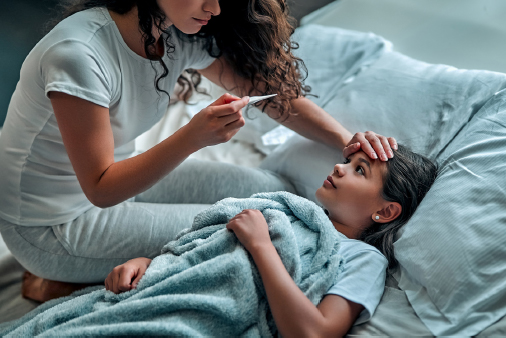
Early studies of COVID-19 have shown that temporary access to paid sick leave under the Families First Coronavirus Response Act (FFCRA)—which sunset in December 2020—helped to “flatten the curve” of the spread of the disease. The FFCRA resulted in workers spending more time at home,27 which led to 400 fewer reported COVID-19 cases per state per day in states with no previous paid sick leave laws.28 This significant impact was reported despite the fact that the FFCRA covered only 47% of private sector workers.29 Additionally, access to paid sick leave allows workers to receive necessary vaccinations. Early in the pandemic, research showed that workers who had not received the COVID-19 vaccines cited concern about missing work as a reason for their delay.30 A more recent study confirmed the connection between paid sick leave and vaccination, finding that cities with a paid sick leave policy had 17% higher vaccination coverage than cities without paid sick leave, with the strongest associations in the most socially vulnerable neighborhoods.31
Early research on COVID-19 is consistent with findings from previous pandemics. During the height of the H1N1 (flu) pandemic of 2009-2010, workers with lower rates of access to paid sick leave were more likely than those with higher rates of access to paid sick leave to go to work sick, and as a result, the pandemic lasted longer in their workplaces as the virus spread from co-worker to co-worker.32 One study estimates that lack of paid sick leave was responsible for five million cases of influenza-like illness during that pandemic.33 Another study estimates that jurisdictions in the United States with paid sick leave requirements experienced a 40% reduction in the flu rate.34
Paid Sick Leave Improves Worker Health

Paid sick leave also improves health outcomes for workers and their families. It has consistently been shown to reduce recovery time for workers, promote the use of regular medical providers rather than hospital emergency departments, and enable workers to seek preventive care.35 Access to paid sick leave decreases the likelihood that a worker will put off needed care, and increases the rates of preventive care among workers and their children.36 A study by the Centers for Disease Control and Prevention found that workers who have access to paid sick leave are significantly more likely to undergo routine cancer screenings and to visit a doctor or obtain other medical care.37 Access to paid sick leave is especially important for maternal health because it allows workers to attend pre- and post-natal medical appointments.
One less obvious benefit of paid sick leave is that it prevents workplace accidents. One study found that workers with access to paid sick leave were 28 percent less likely than workers without access to paid sick leave to be injured on the job, with the strongest connection between access to paid sick leave and a lower incidence of occupational injuries in high-risk sectors and occupations.38
COVID-19 provided a clear example of the benefits of paid sick leave to workers. Access to paid sick leave during the pandemic has allowed workers to stay home and recover while sick, get vaccinated, and still receive a paycheck if they need to quarantine or if their place of work closed on account of a COVID outbreak.39 These economic and health benefits have been a lifeline to families during the pandemic, and must be made available to all workers. Moreover, the availability of paid sick leave can provide peace of mind in the event of an emergency, even if a worker may not need it. In fact, research has shown that workers without paid sick leave report statistically-significant, higher rates of psychological distress than those who have access to this important safety net.40
Firsthand Experiences: How Paid Sick Leave Benefits Workers
Through our free and confidential legal helpline, A Better Balance hears from thousands of workers each year struggling to balance caregiving and professional needs. Many of these workers are forced to choose between their and their loved one’s health or economic security because they work in a place without a paid sick leave law. For those workers covered by a paid sick leave law, the law is often an economic lifeline. Unfortunately, far too many workers in the United States lack a permanent right to paid sick leave.
STEPHANIE works for the city of Huntsville, Alabama, where workers normally are not guaranteed access to paid sick leave. When she was unable to work because she needed to care for her son, who had been advised to quarantine by his doctor, she called A Better Balance (ABB) to find out if she was eligible for COVID-19 emergency sick time and family leave under the now-expired federal law, the Families First Coronavirus Response Act (FFCRA). After sharing our fact sheet and talking with her employer, she was able to receive paid sick leave and paid family leave under the FFCRA to care for her son and maintain her income and benefits.
JAMES* is a deli worker at QFC, a large deli chain, in Redmond, Washington. James called our helpline after being threatened with termination by his general manager when he attempted to use a sick day because he was experiencing nausea and vomiting. His general manager told him that if he didn’t come to work, he shouldn’t bother coming back to work at all. James, who was knowledgeable about his legal rights, saw that he had 22 hours of sick leave available and emailed the company’s bookkeeper asserting that he had the right not to be fired for using sick time under Washington law. After he asserted his legal rights, James’ manager backed off, and he was able to take the time he needed to recover without losing his job or his wages for the day. James told us, “I’m thankful Washington state has laws in place that protect workers who are trying to use their sick leave. My hope is that Congress follows suit and passes a law to protect workers nationwide.”
CRYSTAL is a youth counselor in Kentucky, another state that does not guarantee paid sick leave. While suffering from COVID-19 symptoms, she was denied emergency paid sick leave under the FFCRA and told instead to take leave under the Family Medical Leave Act (FMLA). Without access to emergency paid sick leave, Crystal would have exhausted all of her unpaid FMLA time before the end of her doctor-recommended quarantine period, after which she could have been terminated from her job. After talking with ABB’s helpline, she was able to receive emergency paid sick leave and correct her FMLA leave entitlement, giving her more time to care for her health. As Crystal told us, “I was truly grateful for the information [about the FFCRA] and help that you provided me with. You saved my livelihood!”
*Name changed to protect confidentiality
Paid Sick Leave Provides Economic Benefits to Workers and Their Families
Paid sick leave benefits workers because it allows them to take time off without sacrificing their economic security. This is especially true for low-income workers because it is low-income workers who are least likely to already have access to paid sick leave from their employers.41 For many, the choice between taking care of their health and receiving their paycheck is an impossible one.

Workers without access to paid sick leave are more likely than those with the benefit to have short- and long-term financial troubles. Most workers who have financial worries because of lack of access to paid sick leave are concerned with monthly expenses like rent, utilities, or even grocery bills.42 But many workers also worry about longer-term financial goals like saving for retirement, paying off debt, or regular medical costs.43 For a worker making $12 per hour, the loss of wages for taking one unpaid sick day amounts to their family’s monthly telephone or electricity bill.44 Three days of unpaid sick leave is the equivalent of a whole month’s groceries.45
Finally, workers without paid sick leave often risk their very jobs if they choose to take time off for their own illness or that of a loved one.46 In fact, access to paid sick leave reduces the probability of job loss in a five-month period by 25%.47 Job loss is even more likely among women, parents, and workers who lack access to other forms of paid time off.48 The effects of losing a job, especially for low-income workers and their families who might already live paycheck-to-paycheck, can hardly be overstated. Lost income leads not only to short-term housing and food insecurity, but persistently reduces future earnings.49 It also worsens mental health, aggravates chronic health conditions, and results in academic disruption for children.50
Access to paid sick leave—and prohibiting employers from retaliating against workers who use that right—is an essential part of increasing financial security for workers who need it the most.
Busting Common Myths About Paid Sick Leave

MYTH51: Paid sick leave requirements are too complex, and will have unforeseen consequences that will harm businesses.
TRUTH: The first paid sick leave requirement in the U.S. was enacted in 2006. Data from the dozens of states and cities that have enacted paid sick leave laws since then show that the cost to businesses for providing paid sick leave is quite low, and that paid sick leave requirements even benefit a business’s bottom line by reducing costs associated with employee turnover and improving employee satisfaction.
MYTH: Workers will just use their paid sick leave to skip work and/or take a vacation.
TRUTH: Most workers save their paid sick leave for unforeseen emergencies. In places with paid sick leave requirements, business owners have reported that workers do not abuse their access to paid sick leave.
MYTH: A one-size-fits-all paid sick leave mandate takes away the flexibility that businesses need and their employees value.
TRUTH: As has been demonstrated in the dozens of jurisdictions that have enacted paid sick leave requirements, paid sick leave does not harm businesses. Under a federal paid sick leave law, businesses would still be able to offer more time off and time off for different reasons, so long as they provide the minimum amount of paid sick leave required under the law.
MYTH: A paid sick leave law will be another burden on small businesses, which already struggle to compete with larger ones.
TRUTH: Paid sick leave requirements actually level the playing field between businesses that might want to provide this benefit for their workers but fear the financial cost and their competitors. The law will also benefit small businesses by making staff healthier and more productive and reducing employee turnover.
Paid Sick Leave Benefits Businesses and the Larger Economy
Business Owners Support Paid Sick Leave Laws
On employees abusing paid sick leave: It “didn’t happen. No one has taken a paid sick day because they just didn’t feel like coming in that day. There is no abuse.”52
“There were concerns that I and other small businesses had. But as it turns out, it hasn’t had the kind of impact that I worried about. Not even close. And in fact, the impact that I saw in my business was a much stronger bond between ourselves and our employees, higher productivity, and a more successful business, not less successful business.”53
“[S]ick leave is one issue where people just looked at adjusting their policies and moved on. It hasn’t been a big issue.”54
“I think that paid sick leave can be very positive, especially in my experience of being sick and missing multiple days. You don’t want to worry about losing your job as well. And from a manager point of view, you don’t want to lose a dependable hard working employee due to unforeseen health issues, or even everyday health issues. And so far, it has not been taken advantage of in my opinion.”55
“I do think that paid sick leave helps with employee retention. As a former employee myself, I know that given the option I would much rather work for a place that pays me to stay home and take care of myself. By extension this allows everyone a better chance at avoiding becoming sick, obviously. Seems a small price to pay in the long run.”56
Research has consistently shown that paid sick leave requirements benefit rather than harm businesses. In fact, in November 2022, the American Journal of Industrial Medicine published a systematic review and meta-analysis of more than 20 years of research on paid sick leave and concluded that “we find compelling evidence that increased absences may reduce contagion and presenteeism” and that paid sick leave also benefits employers through “improved job satisfaction, employment retention, better employee health and safety, and improved labor market performance. . . .”57
In a 2016 report assessing New York City’s paid sick leave law, which ABB took a lead role in drafting, passing, and implementing, and which went into effect in 2014, an overwhelming 98% of employers surveyed by the authors reported no known cases of abuse of paid sick leave.58 Most employers were able to cover absences with cost-free measures, such as temporarily reassigning duties to other employees or putting some work on hold.59 Given these results, employers in New York City have a positive view of the earned sick leave law; 86% of employers surveyed now described themselves as supportive of the law, with more than half saying they were “very supportive.”60
Paid sick leave reduces worker turnover, in turn reducing costs incurred from advertising, interviewing, and training new hires.61 These cost savings are not insignificant; replacing workers can cost employers the equivalent of 21 percent of an employee’s annual compensation.62 Providing paid sick leave, on the other hand, only increases labor costs by an average of 2.7 cents per hour worked, and without crowding out other fringe benefits.63
Further, paid sick leave reduces the risk of “presenteeism”—the widespread phenomenon of workers coming to work with illnesses and health conditions that reduce their productivity—a problem that costs the national economy $160 billion annually ($207.6 billion after adjusting for inflation).64 Presenteeism is an especially pressing problem during outbreaks of contagious disease like the seasonal flu or the continued COVID-19 pandemic.
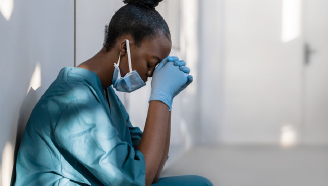 Paid sick leave laws also allow smaller companies that want to offer benefits like paid sick leave to compete on a more even playing field with larger companies. Moreover, paid sick leave has not been shown to lead to job losses and in fact has been associated with job and economic growth in a number of cities and states. In San Francisco, evidence examined since its paid sick leave law took effect in 2006 shows that there has been no adverse effects on San Francisco businesses and that job growth has been as substantial or better than in adjoining counties.65 Studies in New York City also showed steady job growth after the law went into effect. On the law’s first anniversary, the city released a report touting its successful implementation and noted that since the law went into effect, “the city has had steady job growth and the lowest unemployment in six years.”66 The city further reported that “New York City’s economy has thrived since the enactment of PSL [paid sick leave]. Between January 2014 and January 2015, a period that covers the law’s implementation, economic indicators were a cause for celebration, not concern as many had predicted . . . .”67 Studies in Washington, D.C. and Seattle also showed no negative economic effects—such as job losses or business relocations—following the implementation of their paid sick leave laws.68
Paid sick leave laws also allow smaller companies that want to offer benefits like paid sick leave to compete on a more even playing field with larger companies. Moreover, paid sick leave has not been shown to lead to job losses and in fact has been associated with job and economic growth in a number of cities and states. In San Francisco, evidence examined since its paid sick leave law took effect in 2006 shows that there has been no adverse effects on San Francisco businesses and that job growth has been as substantial or better than in adjoining counties.65 Studies in New York City also showed steady job growth after the law went into effect. On the law’s first anniversary, the city released a report touting its successful implementation and noted that since the law went into effect, “the city has had steady job growth and the lowest unemployment in six years.”66 The city further reported that “New York City’s economy has thrived since the enactment of PSL [paid sick leave]. Between January 2014 and January 2015, a period that covers the law’s implementation, economic indicators were a cause for celebration, not concern as many had predicted . . . .”67 Studies in Washington, D.C. and Seattle also showed no negative economic effects—such as job losses or business relocations—following the implementation of their paid sick leave laws.68
Additionally, by promoting access to primary and preventative care, paid sick leave reduces public health care expenditures and benefits the larger economy. Nationally, providing all workers with paid sick leave would result in $1.1 billion in annual savings in hospital emergency department costs, including more than $500 million in savings to publicly funded health insurance programs such as Medicare, Medicaid, and SCHIP.69 In fact, recent research has shown that state paid sick leave laws are associated with a 5.6% reduction in emergency department visits, with reductions concentrated in Medicaid patients.70
Paid Sick Leave Advances Racial and Gender Justice
ABB has been proud to be a leader in the growing movement for paid sick leave, with an increasing number of cities and states with paid sick leave protections in place. Since there is no federal right to paid sick leave, however, coverage across the country remains spotty and therefore inequitable. Low-income workers are far less likely to receive paid sick leave benefits than high-income workers, with only 38% of the lowest-paid decile of private-sector workers having access to paid sick leave, compared to 96% of workers in the top-paid decile.71 Access to paid sick leave is also a gender justice issue. Surveys of service-sector workers, for example, document that women employed in the sector are 11 percentage points less likely than men to have access to paid sick leave.72 Moreover, forty-three percent of working mothers—a number that encompasses 54% of Latina and 42% of Black mothers—do not have access to paid sick leave, which is of particular concern given that women shoulder a disproportionate share of caregiving duties in the United States.73 Overall, workers with high levels of public contact (i.e. those working in the restaurant/service industry, child care professionals) are less likely to have access to paid sick leave. Latinx and Black workers are also less likely to have access to paid sick leave.74
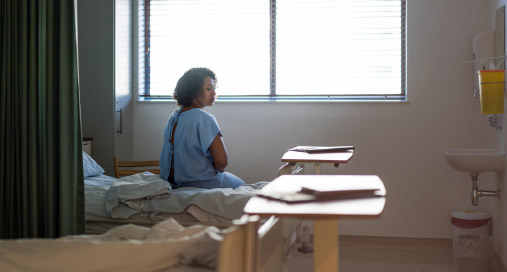
The COVID-19 pandemic was especially difficult for Black, Indigenous, and People of Color (BIPOC) workers. During the pandemic, Black workers were three times more likely than white workers to have their requests for paid sick leave denied, and Black and Latina women in particular expected to lose paid work in order to provide unpaid caregiving.75 At the same time, BIPOC workers were disproportionately more likely to contract COVID-19.
Finally, a federal paid sick leave law with an inclusive family definition could ensure that all workers—no matter what their families look like—can take time off to care for their loved ones.76 Eleven state and local paid sick time laws use a model, inclusive family definition that allows workers to care for extended relatives and close loved ones who are not biologically or legally related to them, and these laws—including their family definition—have been implemented successfully. Furthermore, our country’s largest employer—the federal government—has used and repeatedly expanded an inclusive family definition that recognizes all loved ones for paid sick time for decades. Research shows that recognition of family diversity in paid leave laws is particularly important for LGBTQ individuals and people with disabilities, whose relationships often extend beyond close blood relations.77 The COVID-19 pandemic has only underscored that caregiving often extends beyond the immediate family, with many biological families separated, loved ones caring for isolated older adults, and significant others needing time off to care for each other. Congress recognized this fact when it passed the now-expired Families First Coronavirus Response Act, since it allowed workers to care for immediate family members, individuals residing with each other, and other loved ones who would be expected to care for each other during a quarantine.78 To ensure that paid sick leave laws reflect the reality of today’s families, it is essential that future laws must contain inclusive family definitions that cover extended family and other close loved ones.
Paid Sick Leave Laws Increasingly Protect Victims of Domestic Violence and Sexual Assault
 In addition to time off to take care of their health or that of a loved one, an increasing number of paid sick leave laws also allow workers to take time to address needs related to domestic violence and sexual assault. While all paid sick leave laws allow workers to take time to address the health consequences of domestic violence and sexual assault, many paid sick time laws that have been passed also allow workers time to, for example, obtain a restraining order, attend a court date, access social services, or relocate to a safe location.
In addition to time off to take care of their health or that of a loved one, an increasing number of paid sick leave laws also allow workers to take time to address needs related to domestic violence and sexual assault. While all paid sick leave laws allow workers to take time to address the health consequences of domestic violence and sexual assault, many paid sick time laws that have been passed also allow workers time to, for example, obtain a restraining order, attend a court date, access social services, or relocate to a safe location.
Addressing the Problem of Preemption
A Federal Paid Sick Leave Law Will Guarantee Universal Minimum Coverage and Allow States and Localities to Build on That Framework
While a growing number of states have adopted paid sick leave requirements, many others have taken the opposite tack, preventing—or pre-empting—cities and counties from enacting their own local paid sick leave policies. Milwaukee, WI and Orange County, FL provide prime examples. In both of those localities, voters overwhelmingly passed ballot initiatives giving workers a right to paid sick leave only to have that right snatched away by their state legislatures passing preemption laws. While 6 states preempt local paid sick leave ordinances as part of a comprehensive statewide paid sick leave law, at least another 18 create a regulatory vacuum, where there is no federal or state paid leave requirement and no possibility of local ones.
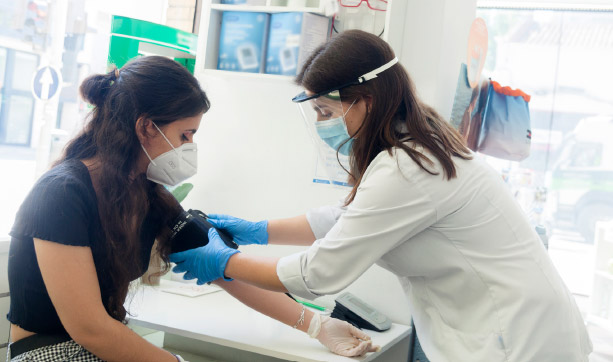
Preemption of paid sick leave is an especially troubling trend because it overwrites the will of local communities in ways that disproportionately affect BIPOC workers. In Alabama, for example, the majority-white legislature responded to a minimum wage ordinance passed in Birmingham, a major-ity-Black city, and the potential for future labor protections (like paid sick leave) by preempting any local regulations related to wages or paid leave. While the lawsuit challenging this preemption law was eventually dismissed, the 11th Circuit Court of Appeals found that there was compelling evidence that the law was motivated by racial animus.79 This same pattern of majority-white legislatures blocking local labor standards has played out again and again in predominantly-Black cities like Atlanta, St. Louis, and Cleveland.80
A federal paid sick leave law would provide a backstop—a minimum paid sick leave requirement that states and localities across the country should be able to build on.
Young Adults Have an Urgent Need for Paid Sick Leave
According to the U.S. Bureau of Labor Statistics (BLS), in July 2022, 22.9 million young people ages 16 to 24 were employed in the U.S., representing 55.3 percent of all young people.81 Young people are concentrated in industries that are lower-wage and among the least likely to provide paid sick time. In 2019, nearly 26% of workers ages 16-24 were employed in the leisure and hospitality industry and nearly 19% were employed in the retail trade (compared to 7.4% of workers age 25 and above employed in leisure and hospitality and 9.4% in retail). 82 Of all sectors tracked by the U.S. Bureau of Labor Statistics, those employed in the service sector—which includes leisure, hospitality, and retail—are the least likely to receive paid sick time.83
Young adults comprise a large share of those providing care to loved ones. According to the AARP and National Alliance for Caregiving, there are 53 million caregivers in the U.S. and of those, more than 3 million are Gen Z, meaning they were born between 1997 and 2012.84 For young workers with family caregiving needs, guaranteed paid sick leave would ensure reduced barriers to entering the workforce, stronger attachment to the labor force, and greater economic security—since, without paid sick leave, one illness or family emergency could lead to job loss and cascading financial disaster. Young adults, who are concentrated in jobs that are disproportionately less likely to have paid sick leave to care for themselves and loved ones, deserve this basic right.
Young adults are also more likely to be employed in seasonal and part-time work, which is less likely to include access to paid sick leave to address personal or family health needs.85 Workers ages 16-24 are more likely than older adults to be underemployed, including those who are involuntarily working part-time and would prefer full-time employment; rates of underemployment are highest among young Black and Hispanic adults.86 Part-time employment is significantly less likely in the United States to involve access to paid sick time; while 86% of full-time, private-sector jobs in the U.S. provide paid sick time, only 51% of part-time jobs include this crucial benefit.87 Young adults have also faced growing economic hardship in recent years, with the COVID-19 pandemic and its resulting economic downturn exacerbating already high rates of unemployment and job precariousness. 88
The Current Paid Sick Leave Landscape & the Need for a Federal Law
Workers Need a Federal Paid Sick Leave Law: Lessons from COVID-19
JAMES* works at a staffing agency in Florida. In September, he tested positive for COVID-19 and needed to quarantine. His employer refused to provide him with any paid time off or emergency paid sick time, although he had worked for the company for nearly 2 years.
RAMON is a line cook at a restaurant chain in Texas. When he began to show symptoms of COVID-19 he went home to quarantine. After testing positive, he was concerned about his rights to paid leave. Unfortunately due to his employers large size, he was not eligible under the FFCRA for emergency sick time to care for himself or his family members who also caught COVID-19.
DELIA works in a waxing salon in Texas. She was exposed to several coworkers who tested positive for COVID-19 and called our helpline for informa-tion on paid sick leave and accommodations. She is 19 weeks pregnant and has a high-risk pregnancy. Based on her employer’s policy, she could only receive pay if she tested positive, leaving her in the untenable position of having to choose between exposure to COVID-19 and her paycheck.
KATIE is an ultrasound tech at a large, private hospital in Wisconsin where she’s worked for more than a decade. She had to quarantine after testing positive for COVID-19. Her three children had to quarantine with her as well. While her employer did provide her with two weeks of disability ben-efits, they were not willing to pay her after that. She was exempted from the FFCRA at the time because of her employer’s size. Even if the hospital had under 500 employees, they were still able to choose to exempt her because she is a healthcare provider. She is the sole provider for her children.
*Name changed to protect confidentiality
The Emergence of a Paid Sick Leave Movement
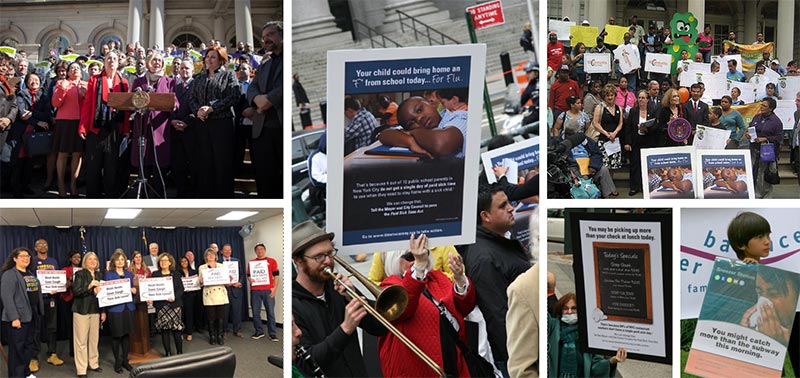
A Better Balance is proud of how many successes the paid sick leave movement has achieved in more than 15 years, laying the groundwork for a strong national policy.The first law requiring that workers have access to paid sick leave was passed by ballotinitiative in San Francisco in November 2006. In January 2007, a small group that included Young Workers United, a San Francisco group that had helped pass the ballot initiative in San Francisco, as well as national and grassroots organizers, advocacy organizations, and researchers who had been working on the issue, convened to discuss how laws could be passed in other jurisdictions to guarantee this important right for workers.
A Better Balance, along with the National Partnership for Women and Families and the Office of Labor Standards in San Francisco which worked on enforcing the San Francisco law, developed a model law that could be adapted for any state or locality. Using that model law and working with grassroots organizations around the country, a dozen campaigns were launched in states and localities to try to secure paid sick leave rights.
In 2008, laws were passed in Milwaukee, Wisconsin by ballot initiative (though this was later preempted by the Wisconsin Legislature) and in Washington D.C. through the D.C. Council. Although the 2008 recession dampened state and local momentum around paid sick leave laws, in 2012, Connecticut became the first state to pass a paid sick leave law, and in 2013, New York City passed its own comprehensive paid sick leave law. Building on those victories and the hard work of advocates around the country, paid sick leave laws have now been passed in 14 states, the District of Columbia, and 34 other localities. Another three states and two localities have enacted more general paid time off laws that allow workers to take time off for sick leave or other purposes.89 Jurisdictions that have pursued paid sick leave policies are diverse in terms of size and demographics, from the state of Arizona in the Southwest and Colorado and New Mexico in the Mountain West, to the city of Duluth, Minnesota in the Midwest, to Pittsburgh, Pennsylvania and Montgomery County, Maryland in the East.
The right to paid sick leave is now guaranteed in most of the largest cities in the U.S.: New York City, Los Angeles, Chicago, and Philadelphia. And these laws have become increasingly comprehensive, with inclusive family definitions, greater employer coverage, and more flexibility in the purposes for which time can be used. To date, we estimate that more than 58 million workers have been covered by the paid sick leave laws we have helped to pass around the country, and we are proud to see that number continue to grow.
New York Serves as a Model for Paid Sick Leave
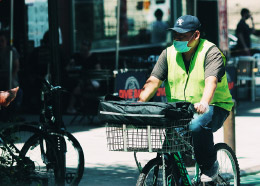
New York has been a leader on paid sick time throughout the movement to ensure this important right for all workers nationwide. In 2009, when the paid sick leave movement was stalled due to the Great Recession, A Better Balance was proud to help put together a coalition, working with champions like New York City Council Member Gale Brewer, to pass a paid sick time law. Despite the opposition of the Mayor and powerful business interests in the city, the effort culminated in passage of a law in 2013 that went into effect in 2014.
The law was based on the model that A Better Balance had drafted along with the National Partner-ship for Women and Families and the San Francisco Office of Labor Enforcement providing workers with 1 hour of sick leave for every 30 hours worked up to an annual maximum (40 hours in this law) to be used to recover from illness, go to the doctor, and care for sick family members—without retaliation and including strong enforcement provisions. We estimate the New York City law gave over a million workers the right to paid sick time for themselves and their families.
Following passage of the New York City law, an increasing number of states and cities across the country began passing their own sick time laws, including a law passed in Westchester County, New York in 2018. Influenced by sick leave campaigns in other cities and counties in the state, in early 2020, the New York State Governor and Legislature moved ahead with a proposal for statewide paid sick time. This turned out to be a timely move as COVID-19 took a stranglehold on the state beginning in March 2020.
Just 10 days after New York declared a state of emergency in relation to COVID-19, on March 17, 2020, the Empire State enacted one of the nation’s first emergency paid sick leave laws. This law gave workers throughout the state immediate access to job-protected paid leave when ordered to quarantine or isolate after having been exposed to or testing positive for COVID-19. Nearly two years into the pandemic, studies continue to show that emergency sick leave measures like this one have prevented thousands of COVID-19 cases and saved lives. Importantly, New York’s emergency sick leave law does not sunset or expire, so workers throughout the state can count on this law’s critical protections to aid them in weathering the full length of the pandemic.
Soon after, on April 3, 2020, the New York State budget was approved with a statewide paid sick leave law that gave all New York workers the right to earn and use permanent paid sick leave. Building on the New York City law, the state law increased the number of hours employees in larger businesses were entitled to (56 hours per year in businesses with 100 or more employees nationwide).
Recent Momentum and New Standards in the Mountain West
Nowhere has the recent momentum for paid sick leave been clearer or stronger than in the Southwest and Mountain West. In 2020 and 2021, the States of Colorado and New Mexico passed landmark paid sick leave laws that have helped to set new standards for the national movement and federal effort. These two States now join Arizona, which passed a paid sick leave law by voter initiative with strong bipartisan support in 2016.

On July 14, 2020, Colorado Governor Jared Polis signed into law the Colorado Healthy Families and Workplaces Act, which guarantees workers
the right to earn paid sick leave. A Better Balance, which has an office in Colorado, was thrilled to play a pivotal role on the ground in this campaign. The law is providing a right to paid sick leave to all workers in the state, regardless of industry or business size. Such universal coverage is especially important for low-wage workers and service industry workers—disproportionately women and people of color—who are among the least likely to have access to paid sick leave. Workers in Colorado are able to earn, based on hours worked, up to 48 hours of paid sick leave a year that can be used for personal or family health needs and needs related to domestic abuse and sexual assault. The law also provides up to 80 hours of immediate paid sick leave during a declared public health emergency, such as COVID-19, which established a new standard in the United States for public health emergency leave. Importantly, the law also has an inclusive family definition, no waiting period on use of accrued sick time, and strong enforcement measures.
In April 2021, New Mexico followed Colorado’s lead and passed a very strong paid sick leave law with ABB’s support. The law allows private-sector employees the right to take up to 64 hours of paid sick leave per year to care for themselves and all their closest loved ones, regardless of legal or biological relationship. The ability of private industry workers across the state—regardless of business size—to earn 64 hours of paid sick leave for themselves or loved ones establishes a new hours standard as we continue to advance sick time laws around the country..
Now is the Time for a Federal Paid Sick Leave Law
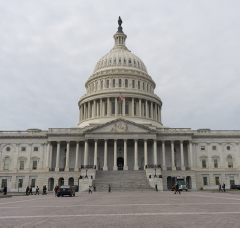 More than 17 years ago, Congress introduced a paid sick leave proposal to make paid sick leave a national requirement for all those in workplaces with 15 or more workers. Titled the Healthy Families Act (HFA), Senator Edward Kennedy of Massachusetts and Representative Rosa DeLauro of Connecticut introduced the legislation. The HFA has been introduced in every Congressional session since but has never passed. Despite the significant need for it and more than 17 years after the Healthy Families Act was first introduced,90 there is still no federal right to paid sick leave in this country. While various state and city laws require employers to provide their workers with paid sick leave, approximately 28 million Americans remain without it.91 Additionally, at least 18 states without a statewide paid sick leave law prohibit local governments from enacting private-sector paid sick leave policies, impeding local action at a time when there is no federal paid sick leave law to fall back on.
More than 17 years ago, Congress introduced a paid sick leave proposal to make paid sick leave a national requirement for all those in workplaces with 15 or more workers. Titled the Healthy Families Act (HFA), Senator Edward Kennedy of Massachusetts and Representative Rosa DeLauro of Connecticut introduced the legislation. The HFA has been introduced in every Congressional session since but has never passed. Despite the significant need for it and more than 17 years after the Healthy Families Act was first introduced,90 there is still no federal right to paid sick leave in this country. While various state and city laws require employers to provide their workers with paid sick leave, approximately 28 million Americans remain without it.91 Additionally, at least 18 states without a statewide paid sick leave law prohibit local governments from enacting private-sector paid sick leave policies, impeding local action at a time when there is no federal paid sick leave law to fall back on.
There was temporary federal action on paid sick leave when the Families First Coronavirus Relief Act (FFCRA) passed and went into effect on April 1, 2020, during the heart of the COVID-19 pandemic. The FFCRA was the first-ever national paid sick leave law, requiring 80 hours of paid sick leave for COVID-19 related illness, to care for a family member with COVID-19, or to quarantine due to possible exposure to COVID-19. The law also contained provisions allowing paid FMLA leave when a child’s school or place of care was unavailable due to COVID-19. The law applied to all public workers and to private-sector workers in businesses with fewer than 500 employees. Unfortunately, however, the FFCRA was permitted to sunset on December 31, 2020 leaving millions of workers unprotected during the ongoing pandemic.
The rapid spread of COVID-19 throughout the country showed us that all workers need paid sick leave, access to which should not depend on which state or city workers happen to work in. It is clear that a federal paid sick leave law is necessary to protect workers—and all of us.
Voters understand the importance of paid sick time laws and support them. In one poll, 87% of voters said that they supported paid sick leave and paid family leave for workers impacted by the COVID-19 pandemic, including 91% of Democrats, 86% of Republicans, and 71% of Independents.92
With the momentum at the state and local level on paid sick leave, the public health lessons of the past three years, and the popularity of the issue, it is time for Congress to pass the Healthy Families Act. As efforts to pass paid sick leave protections at the federal level and in more states continue, it is important for elected officials and policymakers to recognize the growing momentum around the issue. Not only do the increasing number of paid sick leave laws reflect that the laws are working well for employers and employees, but they also demonstrate a move towards increasingly universal, comprehensive, and inclusive policies.
Victories in Colorado and New Mexico reflect this trend and provide a model for members of Congress and legislatures around the country.
If the pandemic taught us anything, it is that the health of the people in this country is paramount. Our economy and society cannot function if our workers are forced to come in sick or send their children to daycare sick. Without a national paid sick leave law, we are putting a strain on our businesses, our healthcare system, and most importantly, our nation’s families. Now is the time for Congress to act. The Healthy Families Act is the solution.
How the Healthy Families Act Will Work
- Workers will be able to take time off when they are ill, injured, or receiving medical care. This includes mental and physical illnesses, as well as time off for preventive care.
- Workers will earn up to 56 hours of paid sick time a year, which they will accrue at a rate of 1 hour of paid sick leave for every 30 hours worked. Employers with fewer than 15 employees may meet the law’s requirements by providing unpaid sick time that otherwise meets all of the law’s requirements.
- Workers can also use their time to care for family members, and family is broadly defined to reflect diverse family arrangements. Under the HFA, workers will be able to use their time when their child, parent, spouse, domestic partner, or other relative to whom the worker has a similarly close relation-ship is ill, injured, or getting medical care. Workers can also use their time to attend a child’s school meeting or a meeting at a family member’s place of care that is necessitated by the family member’s health condition or disability.
- Time off under the law can also be used for domestic violence and sexual assault victims to address their safety, as well as their medical needs.
- Employers can require reasonable notice. For foreseeable absences like doctors’ appointments, employers can require up to 7 days advance notice. For other absences, employers can require notice as soon as practicable.
- Employers who already provide comparable paid time off will not be required to offer additional time. If an employer provides at least the same amount of time required by the HFA and that time can be used for the same purposes and under the same conditions as time off under the HFA, that employer will not be required to provide more time off.
The law prohibits retaliation and discrimination against employees for exercising their sick time rights and provides strong enforcement when violations do occur.
Key Principles of a Strong Federal Paid Sick Leave Law
Based on our work across the country on state and local paid sick leave laws, ABB has identified several key principles for a strong federal paid sick leave law:
- Universal coverage: The public health benefits of sick leave are best achieved by broad access to such time off. When more workers can take time off from work to care for their health and that of their loved ones, contagious illnesses are less likely to spread across the entire community.
- Sufficient time off: While any amount of paid sick leave would be more than what many workers currently receive, a federal law should provide workers with at least 56 hours—or seven days—of paid sick leave.
- Broad sick time purposes: Workers take paid sick leave for a variety of reasons, from attending to preventive care appointments to sudden emergency room visits. A federal paid sick leave law should allow workers to take time off for all such purposes, including providing for leave during a public health emergency.
- Safe time: Workers should be able to use their sick time to deal with the effects of domestic violence, sexual assault, and stalking.
- Flexible requirements for notice to employers: While workers are sometimes able to give advance notice
of their need to take paid sick leave, they should be allowed to take time off on sudden notice when necessary, such as during an emergency. - Inclusive family definition: Families come in myriad varieties, which should be reflected in a paid sick leave law. Defining family broadly to reflect diverse family arrangements—including extended family and loved ones who aren’t biologically or legally related to each other—is necessary for a fully inclusive paid sick leave law.
- Strong enforcement: A federal paid sick leave law will require dedicated enforcement. The law should also provide for a private right of action so that workers themselves can enforce their right in court.
- Notice to workers: A federal paid sick leave law would provide little benefit if workers do not know about it. Employers must provide notice to workers of their rights under the law.
- Education and outreach: While implementation of
a paid sick leave program is not overly arduous for businesses, proactive outreach to employers about their requirements under the law will ease the transition, and education and outreach to workers generally will help ensure that paid sick leave is accessed when needed. - No preemption: A federal paid sick leave law should provide a minimum standard that states and localities can build upon.
Endnotes
- U.S. Bureau of Labor Statistics, Employee Benefits in the United States, March 2022 (Sept. 2022), https://www.bls.gov/news.release/pdf/ebs2.pdf.
- A Better Balance, Interactive Overview of Paid Sick time Laws in the United States, https://www.abetterbalance.org/paid-sick-time-laws/ (last visited May 9, 2023).
- Hye Jin Rho et , Center for Economic Policy Research, Contagion Nation 2020: United States Still the Only Wealthy Nation without Paid Sick Leave (Mar. 19, 2020), https://cepr.net/report/contagion-nation-2020-united-states-still-the-only-wealthy-nation-without-paid-sick-leave/.
- Rae Ellen Bichell & Kaiser Health News, With Federal COVID Sick Leave Gone, Ill Workers Feel Pressure to Go to Work, Fortune (Nov. 30, 2021), https://fortune.com/2021/11/30/federal-covid-paid-sick-leave-ill-workers/.
- The SHIFT Project, Essential and Vulnerable: Service-Sector Workers and Paid Sick Leave (Apr. 2020), https://shift.hks.harvard.edu/files/2020/04/Essential_and_Vulnerable_Service_Sector_Workers_and_Paid_Sick_Leave.pdf.
- Stefan Pichler et , COVID-19 Emergency Sick Leave Has Helped Flatten The Curve in The United States, 39 Health Aff. 2197 (Oct. 2020), https://www.healthaffairs.org/doi/10.1377/hlthaff.2020.00863.
- Hye Jin Rho et , supra note 3.
- Drew DeSilver, As Coronavirus Spreads, Which S. Workers Have Paid Sick Leave — And Which Don’t?, Pew Research Ctr. (Mar. 12, 2020), https://www.pewresearch.org/fact-tank/2020/03/12/as-coronavirus-spreads-which-u-s-workers-have-paid-sick-leave-and-which-dont/.
- U.S. Bureau of Labor Statistics, supra note 1.
- National Partnership for Women & Families, Working Women Need Paid Sick Days (Apr. 2013), https://www.nationalpartnership.org/our-work/resources/economic-justice/paid-sick-days/working-women-need-paid-sick-days.pdf.
- Rachel O’Connor et , Paid Sick Days Access Varies by Race/Ethnicity, Sexual Orientation, and Job Characteristics, Inst. for Women’s Policy Research (July 2014), https://iwpr.org/wp-content/uploads/2021/01/B337.pdf.
- Restaurant Opportunities United, Serving While Sick: High Risks & Low Benefits for the Nation’s Restaurant Workforce, and Their Impact onthe Consumer (Sept. 30, 2010), https://www.co.benton.or.us/sites/default/files/fileattachments/health_department/page/2139/servingwhilesick.pdf.
- Stefan Pichler et , supra note 6; The SHIFT Project, supra note 5.
- Stefan Pichler et al., supra note
- Stefan Pichler & Nicholas Ziebarth, The Pros and Cons of Sick Pay Schemes: Contagious Presenteeism and Noncontagious Absenteeism Behavior
- Center for Economic Policy Research: VoxEU (May 12, 2018), https://voxeu.org/article/pros-and-cons-sick-pay.
- Christine Siegwarth Meyer et , Work-Family Benefits: Which Ones Maximize Profits?, 13 J. Managerial Issues 28 (2001), https://www.jstor.org/stable/40604332.
- Heather Boushey & Sarah Jane Glynn, There Are Significant Business Costs to Replacing Employees, for American Progress (Nov. 16, 2012), https://www.americanprogress.org/issues/economy/reports/2012/11/16/44464/there-are-significant-business-costs-to-replacing-employees/.
- Walter Stewart et al., Lost Productive Work Time Costs from Health Conditions in the United States: Results from the American ProductivityAudit, 45 J. Occupational & Envtl. Med. 1234 (Dec. 2003), https://www.nationalpartnership.org/our-work/resources/economic-justice/paid-sick-days/ lost-productive-work-time-american-productivity-audit.pdf (unpublished calculation based on $226 billion annually in lost productivity, 71 percent due to presenteeism).
- Kevin Miller et , Paid Sick Days and Health: Cost Savings from Reduced Emergency Department Visits, Inst. for Women’s Policy Research, at iii & 14-15 (Nov. 2011), https://iwpr.org/publications/paid-sick-days-and-health-cost-savings-from-reduced-emergency-department-visits/.
- National Partnership for Women & Families, Voters Show Bipartisan Support for Permanent Paid Sick Days and Paid Family and Medical Leave(Nov. 2020), https://nationalpartnership.org/wp-content/uploads/2023/02/voters-show-bipartisan-support-for-permanent-paid-sick-days-and-paid-family-and-medical-leave.pdf.
- Ann Bartell et al., Racial and Ethnic Disparities in Access to and Use of Paid Family and Medical Leave: Evidence From Four Nationally Representative Datasets, U.S. Bureau of Labor Statistics: Monthly Labor Review (Jan. 2019), https://www.bls.gov/opub/mlr/2019/article/racial-and-ethnic-disparities-in-access-to-and-use-of-paid-family-and-medical-leave.htm; Mary Beth Maxwell et al., 2018 U.S. LGBTQ Paid Leave Survey at 14, Human Rights Campaign Foundation (2018), https://assets2.hrc.org/files/assets/resources/2018-HRC-LGBTQ-Paid-Leave-Survey.pdf.
- U.S. Occupational Safety & Health Admin., OSHA Fact Sheet: What Employers Can Do to Protect Workers from Pandemic Influenza (May 2009), https://www.osha.gov/sites/default/files/publications/employers-protect-workers-flu-factsheet.pdf.
- Tom Smith & Jibum Kim, Paid Sick Days: Attitudes and Experiences, Nat’l Opinion Research Ctr. at the Univ. of Chicago (June 2010),https://www.issuelab.org/resources/10518/10518.pdf.
- Restaurant Opportunities Center United, supra note
- Tom Smith & Jibum Kim, supra note 23.
- Nat’l Partnership for Women & Families, supra note
- Martin Anderson et , Effect of a Federal Paid Sick Leave Mandate on Working and Staying at Home During the COVID-19 Pandemic: Evidencefrom Cellular Device Data, NBER Working Paper (Oct. 2020), https://www.nber.org/system/files/working_papers/w27138/w27138.pdf.
- Stefan Pichler et , supra note 6.
- Sarah Jane Glynn, Coronavirus Paid Leave Exemptions Exclude Millions of Workers From Coverage, for American Progress (Apr. 17, 2020), https://www.americanprogress.org/issues/economy/news/2020/04/17/483287/coronavirus-paid-leave-exemptions-exclude-millions-workers-coverage/.
- Samantha Artiga & Liz Hamel, How Employer Actions Could Facilitate Equity in COVID-19 Vaccinations, Kaiser Family (May 17, 2021), https://www.kff.org/policy-watch/how-employer-actions-could-facilitate-equity-in-covid-19-vaccinations/.
- Alina S. Schnake-Mahl et al., Higher COVID-19 Vaccination and Narrower Disparities in US Cities with Paid Sick Leave Compared to Those Without, 41 Health Aff. 1565 (2022), https://www.healthaffairs.org/doi/full/10.1377/hlthaff.2022.00779.
- Robert Drago & Kevin Miller, Sick at Work: Infected Employees in the Workplace During the H1N1 Pandemic, for Women’s Policy Research (Feb. 2010), https://iwpr.org/wp-content/uploads/2020/11/B284.pdf.
- Supriya Kumar et , The Impact of Workplace Policies and Other Social Factors on Self-Reported Influenza-Like Illness During the 2009H1N1 Pandemic, 102 Am. J. Pub. Health 134, 139 (Jan. 2012), https://www.ncbi.nlm.nih.gov/pmc/articles/PMC3490553/.
- Stefan Pichler & Nicholas Ziebarth, supra note 15.
- National Partnership for Women & Families, Paid Sick Days Improve Public Health by Reducing the Spread of Disease (Nov. 2022), https://nationalpartnership.org/wp-content/uploads/2023/02/paid-sick-days-improve-our-public-health.pdf .
- Id.
- Lucy Peipins et al., The Lack of Paid Sick Leave as a Barrier to Cancer Screening and Medical Care-Seeking: Results from the NationalHealth Interview Survey, 12 BMC Public Health, article no. 520 (2012), httpss://www.biomedcentral.com/content/pdf/1471-2458-12-520.pdf.
- Abay Asfaw et , Paid Sick Leave and Nonfatal Occupational Injuries, 102 Am. J. Pub. Health e59 (Sept. 2012), https://www.ncbi.nlm.nih.gov/pmc/articles/PMC3482022/.
- Alison Thompson et , Benefits of Paid Sick Leave During the COVID-19 Pandemic at 1, Science Table: COVID-19 Advisory for Ontario(Apr. 28, 2021), https://covid19-sciencetable.ca/wp-content/uploads/2021/04/Science-Brief_Paid-Sick-Leave_20210504_version-1.1_published2.pdf.
- Patricia Stoddard-Dare et al., Paid Sick Leave and Psychological Distress: An Analysis of U.S. Workers, 88 Am. J. Orthopsychiatry 1 (2019), https://psycnet.apa.org/doiLanding?doi=10.1037%2Fort0000293.
- Lisa Clemens-Cope et , Access to and Use of Paid Sick Leave Among Low-Income Families with Children, 122 Pediatrics e480 (2008),https://pubmed.ncbi.nlm.nih.gov/18676534/.
- LeaAnne DeRigne et , Working U.S. Adults without Paid Sick Leave Report More Worries about Finances, 45 Journal of SocialService Research 570 (2019), https://www.tandfonline.com/doi/abs/10.1080/01488376.2018.1481176.
- Id.
- Elise Gould & Jessica Schieder, Work Sick of Lose Pay? The High Cost of Being Sick When You Don’t Get Paid, Econ. Pol’y Inst., at Table 1 (June 28, 2017), https://www.epi.org/publication/work-sick-or-lose-pay-the-high-cost-of-being-sick-when-you-dont-get-paid-sick-days/.
- Id.
- Council of Economic Advisers, The Economics of Paid and Unpaid Leave at 14 (June 2014), https://obamawhitehouse.archives.gov/sites/default/files/docs/leave_report_final.pdf.
- Heather Hill, Paid Sick Leave and Job Stability, 40 Work & Occupations, no. 2 (Nov. 12, 2013), https://www.ncbi.nlm.nih.gov/pmc/articles/PMC3825168/.
- Id.
- Ann Huff Stevens, The Human Downsides of Job Loss in Good Times and Bad, Scholars Strategy Network (June 5, 2018), https://scholars.org/contribution/human-downsides-job-loss-good-times-and-bad.
- A Better Balance, Paid Sick Leave is Good for Business, https://www.abetterbalance.org/wp-content/uploads/2021/02/Paid-Sick-Leave-Is-Good-for- Business-2.23.21.pdf (last visited May 9, 2023).
- Eileen Appelbaum & Ruth Milkman, No Big Deal: The Impact of New York City’s Paid Sick Days Law on Employers, Center for Economic & Policy Research, at 18 (Sept. 2016), httpss://cepr.net/images/stories/reports/nyc-paid-sick-days-2016-09.pdf.
- Zoe Ziliak Michel, During Healthy Families Act Days of Action, Business Owners Stress Benefits of Paid Sick Time, Center for Law & Social Policy (May 16, 2016), https://www.clasp.org/ blog/during-healthy-families-act-days-action-business-owners-stress-benefits-paid-sick-time/ .
- Ilana DeBare, F. Sick Leave Law Celebrates 1 Year, SFGATE (Feb. 6, 2008), https://www.sfgate.com/business/article/S-F-sick-leave-law-celebrates-1- year-3229376.php.
- Quote from a manager at a New York café provided to A Better Balance, January
- Quote from a café/restaurant owner in Berkeley, California provided to A Better Balance, January
- Candice Vander Weerdt et al., Is Paid Sick Leave Bad for Business? A Systematic Review, 66 Am. J. Indus. Med. 429, 438 (Feb. 2023), https://onlinelibrary.wiley.com/doi/epdf/10.1002/ajim.23469.
- Eileen Appelbaum & Ruth Milkman, supra note 52 at
- Id. at 19
- Id. at 28
- Christine Siegwarth Meyer et , supra note 16.
- Heather Boushey & Sarah Jane Glynn, supra note
- Catherine Maclean et , Mandated Sick Pay: Coverage, Utilization, and Welfare Effects at 4, Washington Center for Equitable Growth (Jan. 2022), https://equitablegrowth.org/working-papers/mandated-sick-pay-coverage-utilization-and-welfare-effects/.
- Walter Stewart et al., supra note 18.
- See, g., Vicky Lovell & Kevin Miller, Job Growth Strong with Paid Sick Days, Inst. for Women’s Policy Research (Oct. 2008), https://iwpr.org/wp-content/uploads/2020/11/B264.pdf.
- Shira Gans, NYC’s Paid Sick Leave Law: First Year Milestones, New York City Consumer Affairs, at 4 (June 2015), httpss://www1.nyc.gov/assets/dca/downloads/pdf/about/PaidSickLeaveLaw-FirstYearMilestones.pdf.
- Id. at
- Yolanda Branche, Audit of the Accrued Sick and Safe Leave Act of 2008 at 19, Office of the District of Columbia Auditor (June 19, 2013), https://dcauditor.org/report/audit-of-the-accrued-sick-and-safe-leave-act-of-2008/; The Main Street Alliance of Washington, Paid Sick Daysand the Seattle Economy: Job Growth and Business Formation at the 1-Year Anniversary of Seattle’s Paid Sick and Safe Leave Law at 4 (Sept. 2013),httpss://www.eoionline.org/wp-content/uploads/PSD-1-Year-Report-Final.pdf.
- Kevin Miller et , supra note 19 at iii & 14-15 (Nov. 2011).
- Yanlei Ma et al., State Mandatory Paid Sick Leave Associated with a Decline in Emergency Department Use in the US, 2011-19, 41 Health Aff. 1169 (2022), https://www.healthaffairs.org/doi/pdf/10.1377/hlthaff.2022.00098.
- S. Bureau of Labor Statistics, supra note 1.
- Kristen Harknett & Daniel Schneider, Mandates Narrow Gender Gaps in Paid Sick Leave Coverage for Low-Wage Workers in the US, 41 Health Aff. 1575 (2022), https://www.healthaffairs.org/doi/10.1377/hlthaff.2022.00727.
- Nat’l Partnership for Women & Families, supra note
- Rachel O’Connor et , supra note 11.
- Rakeen Mabud et , Foundations For a Just and Inclusive Recovery: Economic Security, Health and Safety, and Agency and Voice in the COVID-19 Era, Color of Change, National Employment Law Project, Time’s Up Foundation, and ILR Worker Institute (Feb. 2021), https://www.nelp.org/wp-content/uploads/Foundations-for-Just-Inclusive-Recovery-Report.pdf.
- A Better Balance, Fact Sheet: The Importance of Inclusive, Realistic Family Definitions for Paid Leave (Aug. 2021), https://www.abetterbalance.org/resources/fact-sheet-importance-of-broad-family-definitions-for-paid-leave/.
- Katherine Gallagher Robbins et , People Need Paid Leave Policies that Cover Chosen Family, Ctr. for American Progress (Oct. 30, 2017), https://www.americanprogress.org/article/people-need-paid-leave-policies-that-cover-chosen-family/.
- A Better Balance, supra note
- Lewis Governor of Alabama, 896 F.3d 1282, 1297 (11th Cir. 2019), rev’d 944 F.3d 1287 (11th Cir. en banc 2019).
- PowerSwitch Action, States Preempting Local Laws Are an Extension of Jim Crow (Aug. 29, 2017), https://www.powerswitchaction.org/updates/states-preempting-local-laws-are-extension-of-jim-crow.
- U.S. Bureau of Labor Statistics, Employment and Unemployment Among Youth – Summer 2022 (Aug. 17, 2022), https://www.bls.gov/news.release/pdf/youth.pdf.
- Elise Gould & Melat Kassa, Young Workers Hit Hard by the COVID-19 Economy, Econ. Pol’y Inst. (Oct. 14, 2020), https://www.epi.org/publication/young-workers-covid-recession.
- U.S. Bureau of Labor Statistics, supra note 1.
- AARP & The National Alliance for Caregiving, Caregiving in the United States 2020 (May 14, 2020), https://www.aarp.org/ppi/info-2020/caregiving-in-the-united-states.html; see also Anna Altman, The Silent Epidemic Affecting Generation Z, Esquire (Jan. 12, 2023), https://www.esquire.com/news-politics/a42287580/gen-z-caregivers/.
- U.S. Bureau of Labor Statistics, supra note 81; Elise Gould & Melat Kassa, supra note 82.
- Elise Gould & Melat Kassa, supra note 82.
- U.S. Bureau of Labor Statistics, supra note 1.
- Laura Tatum et al., The Youth Opportunity Guarantee: A Framework for Success at 19, Georgetown Center on Poverty & Inequality (2019), httpss://www.georgetownpoverty.org/wp-content/uploads/2019/03/Youth-Opportunity-Guarantee-03282019.pdf; see also Elise Gould & Melat Kassa, supra note 82.
- A Better Balance, supra note 2 (this count includes local paid sick leave laws that were enacted but later preempted by state law); note that Illinois became the latest state to pass a paid time off law, which will take effect on January 1, 2024.
- Nat’l Partnership for Women & Families, Healthy Families Act Introduced in Congress (Apr. 27, 2005), https://www.nationalpartnership.org/our-impact/news-room/press-statements/healthy-families-act-introduced.html.
- A Better Balance, At A Glance: The Healthy Families Act (May 2023), https://www.abetterbalance.org/resources/healthy-families-act-factsheet/.
- Vicki Shabo, High Levels of Bipartisan Public Support for National Emergency Paid Sick Days and Medical Leave in the Wake of COVID-19 at 5,New America (Apr. 10, 2020), https://newamericadotorg.s3.amazonaws.com/documents/FINAL_-_Shabo_-_Interested_Parties_Memo_on_COVID_ Polling_-_April_10_2020.pdf.
